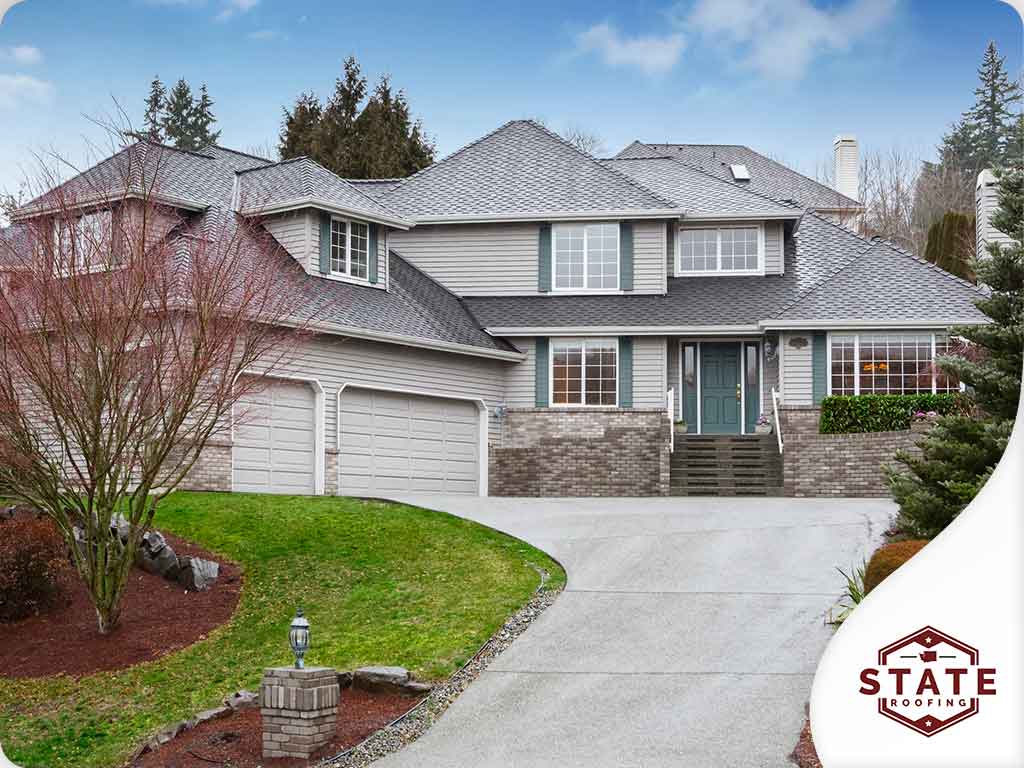The best defense against winter roofing problems, such as ice dams and water infiltration, is a well-designed roof. In this blog, roofing installation contractor State Roofing shares the design elements of a winterized roof.

- Keep Roofing Planes to a Minimum — The more complicated the roof is, the higher the potential it has of developing problems caused by leaves, debris, snow and ice. A gable roof is the roofing style that’s the least likely to develop problems during winter. When designing a roof, keep the number of planes as few as possible, and make sure that transitions within these planes are protected with flashing.
- Avoid Roof Openings — Each hole cut on the roofing surface—skylights, chimneys and gables among them—is a potential spot for leaks. While some of these are absolutely necessary, make sure that your roofing contractor incorporates protection against leaks. In addition to the aforementioned flashing, which could be installed around skylights, rubber boots should be installed at penetration points around popes.
- Position Chimneys Near the Roof Ridge — The highest point of the roof is the best place to position chimneys and vent pipes, as water and snow doesn’t collect there. This is why certain architectural styles have its chimneys positioned at a gabled wall.
- Metal Roofs Shed Snow Better — Metal roofing systems have many advantages that make it suitable for homes in cold climates: it’s more durable, it resists punctures and it’s more efficient at shedding snow and rainwater. The latter feature is especially important during times when accumulated snow poses the risk of roof collapse.
- Provide Allowance for Shed Snow — If you have a roof that sheds snow efficiently, you have to account for where the snow will go. Getting high-capacity gutters with heated covers can help reduce the snow piles, however, you should also prepare areas around the house in case snow from the roof falls to the ground. Allow enough clearance beneath the roofline, mark spots for your landscaping, and install paths that are not located directly below the eaves. These measures also help prevent accidents caused by icicles.
State Roofing is your leading provider of residential roof installation and repair services. Give us a call at [company_phone] or fill out our contact form. We serve customers in Seattle, WA, and nearby areas.








